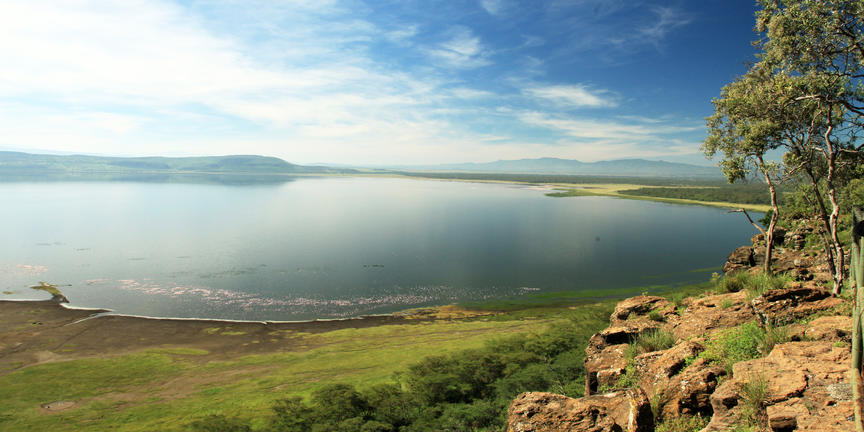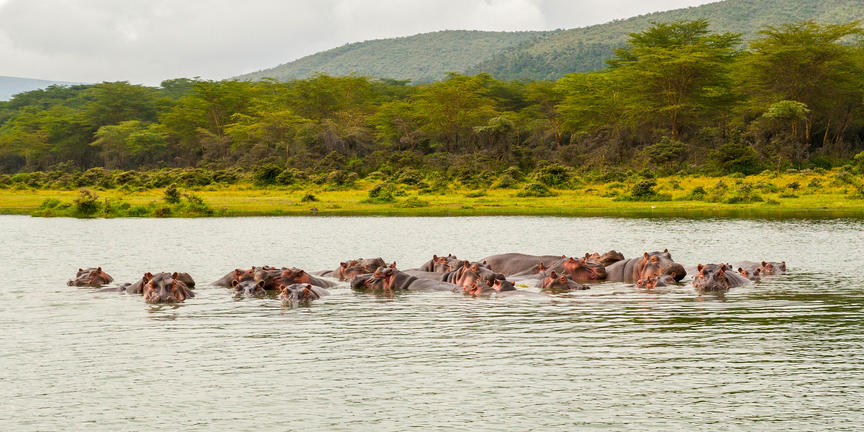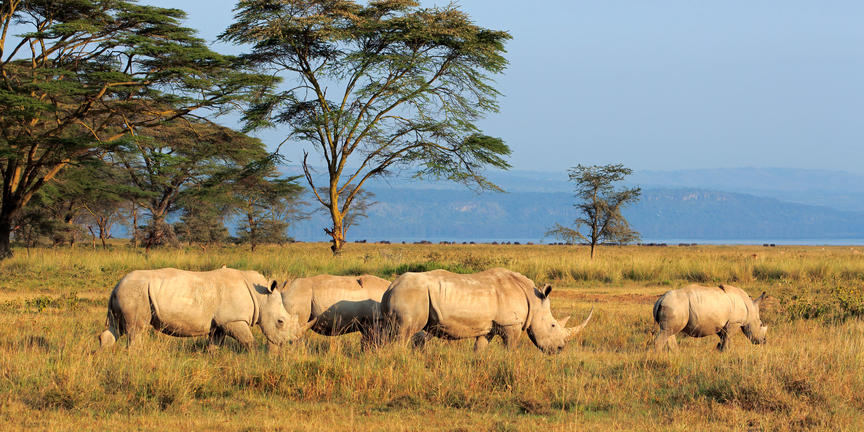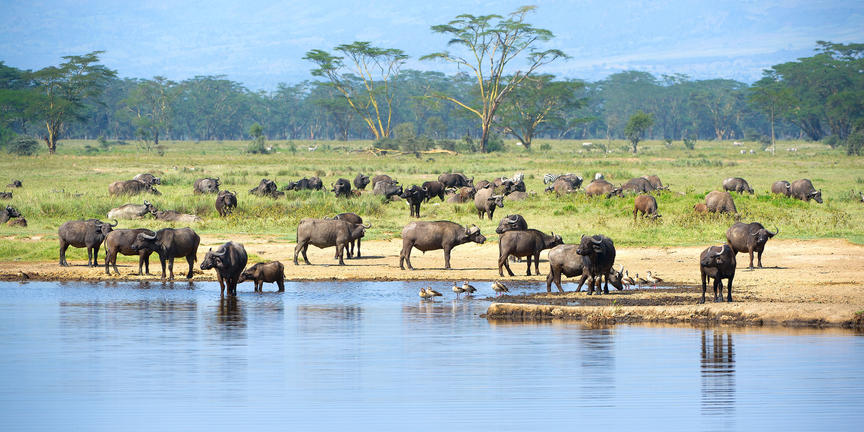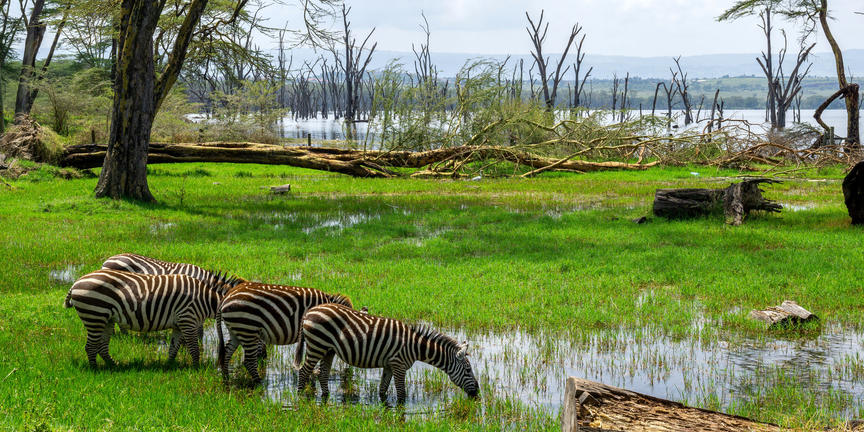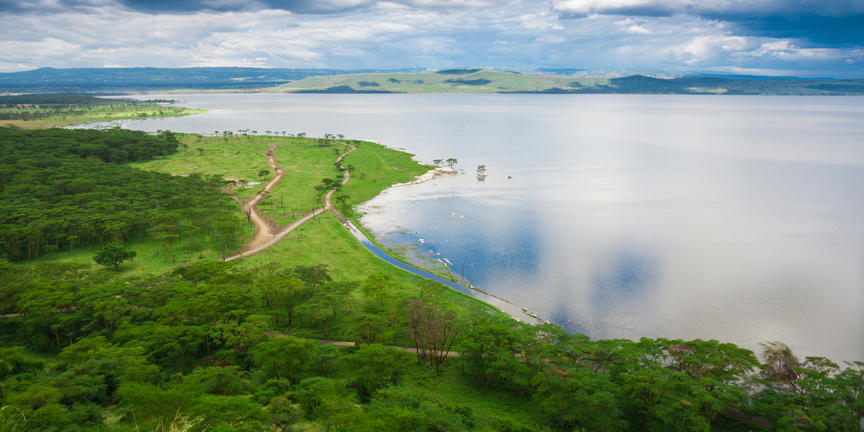Lake Nakuru – The Shimmering Jewel of the Great Rift Valley
Bordered by golden grasslands, sweeping acacia woodlands, and rugged volcanic ridges, Lake Nakuru lies at the heart of Kenya’s Great Rift Valley, filling a shallow basin formed millions of years ago by tectonic activity. Its alkaline, mineral-rich waters shift in hue from blue-green to silver-grey depending on the light and algae levels, creating a constantly changing canvas of natural beauty.
Once famed for the millions of lesser flamingos that blanketed its surface in pink, Lake Nakuru remains one of Kenya’s most captivating and ecologically significant landscapes — a sanctuary of life and colour amid the dramatic Rift Valley escarpments.
Location and Ecosystem – Great Rift Valley, Kenya
Lake Nakuru sits about 160 kilometres (2.5–3 hours’ drive) northwest of Nairobi, at an elevation of 1,754 metres above sea level. It forms the central feature of the Lake Nakuru National Park, which encompasses 188 square kilometres of diverse habitats including woodlands, grasslands, and rocky ridges.
The lake lies in a natural depression within the Rift Valley, flanked by volcanic cliffs and fed by a handful of seasonal rivers and springs. Its alkaline waters support a unique ecosystem of cyanobacteria and algae, which in turn attract a vast array of birdlife and aquatic species.
Unique Features
Dynamic Alkaline Lake: Lake Nakuru’s shimmering waters are highly alkaline, rich in minerals, and constantly changing colour — from jade green to silvery grey — depending on sunlight, rainfall, and algae growth.
Flamingo Haven: Historically, the lake hosted millions of lesser and greater flamingos, drawn to the dense algae blooms. In recent years, rising water levels have diluted salinity, reducing algae growth, yet smaller migrating flocks continue to create spectacular pink vistas along the shoreline.
Diverse Birdlife: Over 400 bird species thrive here, including great white pelicans, herons, fish eagles, cormorants, and African spoonbills, making the lake one of Kenya’s top birding destinations.
Scenic Surroundings: The landscape around the lake is as captivating as the waters themselves — rolling grasslands, acacia forests, and rugged escarpments alive with wildlife.
Iconic Viewpoints: The Baboon Cliff and Lion Hill viewpoints offer sweeping panoramas across the lake and the Rift Valley plains — perfect for photography and sunset viewing.
Ecological Significance: Lake Nakuru is an important Ramsar wetland site, vital for waterbirds, biodiversity, and Kenya’s conservation network within the Rift Valley system.
Activities in the Area
Lake Nakuru offers a wealth of outdoor and wildlife experiences, combining scenic beauty with ecological exploration:
Game Drives: Explore shoreline tracks and woodland trails to spot rhinos, giraffes, buffaloes, zebras, and other wildlife against the lake’s reflective backdrop.
Birdwatching: Enjoy exceptional birding with over 400 species, including pelicans, flamingos, herons, storks, and raptors.
Scenic Viewpoints: Visit Baboon Cliff, Out of Africa Lookout, and Lion Hill for breathtaking views of the lake, escarpments, and open plains.
Photography: Capture the lake’s ever-changing colours, birdlife, and dramatic landscapes in soft morning or evening light.
Nature Walks and Picnicking: Designated areas within Lake Nakuru National Park allow for relaxing picnics, short walks, and wildlife observation in serene surroundings.
Travel Information
How to Get There
By Road: Lake Nakuru is approximately 160 km (2.5–3 hours) northwest of Nairobi, via the Nairobi–Nakuru Highway. Access is through Nakuru Town or park gates such as Lanet Gate or Main Gate.
By Air: The Nakuru Airstrip receives charter flights from Nairobi’s Wilson Airport, taking about 45 minutes.
Travel Distances
Nairobi → Lake Nakuru: ~2.5–3 hours (160 km)
Lake Nakuru → Lake Naivasha: ~1 hour (80 km)
Lake Nakuru → Aberdare National Park: ~2 hours (130 km)
Lake Nakuru → Masai Mara National Reserve: ~5 hours (250 km)
Best Time to Visit
Dry Season (June – October & January – February): Ideal for game drives, birdwatching, and clear scenic views.
Wet Season (March – May & November – December): The landscape turns lush and vibrant, attracting migratory birds and enhancing photography opportunities.
Why Include Lake Nakuru in Your African Safari Itinerary
Lake Nakuru is one of Kenya’s most picturesque and accessible natural wonders — a fusion of geological beauty, wildlife diversity, and avian spectacle. Even as the flamingo populations fluctuate, the lake continues to captivate with its changing colours, reflective waters, and abundant birdlife.
Whether gazing down from Baboon Cliff or tracing the curve of the shoreline on a morning game drive, visitors are reminded why Lake Nakuru remains a crown jewel of the Great Rift Valley and a timeless symbol of Kenya’s natural splendour.
Key Attractions
Lake Nakuru – Shimmering Alkaline Waters of the Rift Valley
Flamingo and Pelican Populations
Over 400 Bird Species – From Herons to Fish Eagles
Baboon Cliff & Lion Hill Viewpoints
Golden Grasslands & Acacia Woodlands
Makalia Waterfall – Scenic Picnic Spot
Rich Wildlife – Rhinos, Giraffes, Buffalo & Zebra
Changing Lake Colours & Reflective Landscapes
